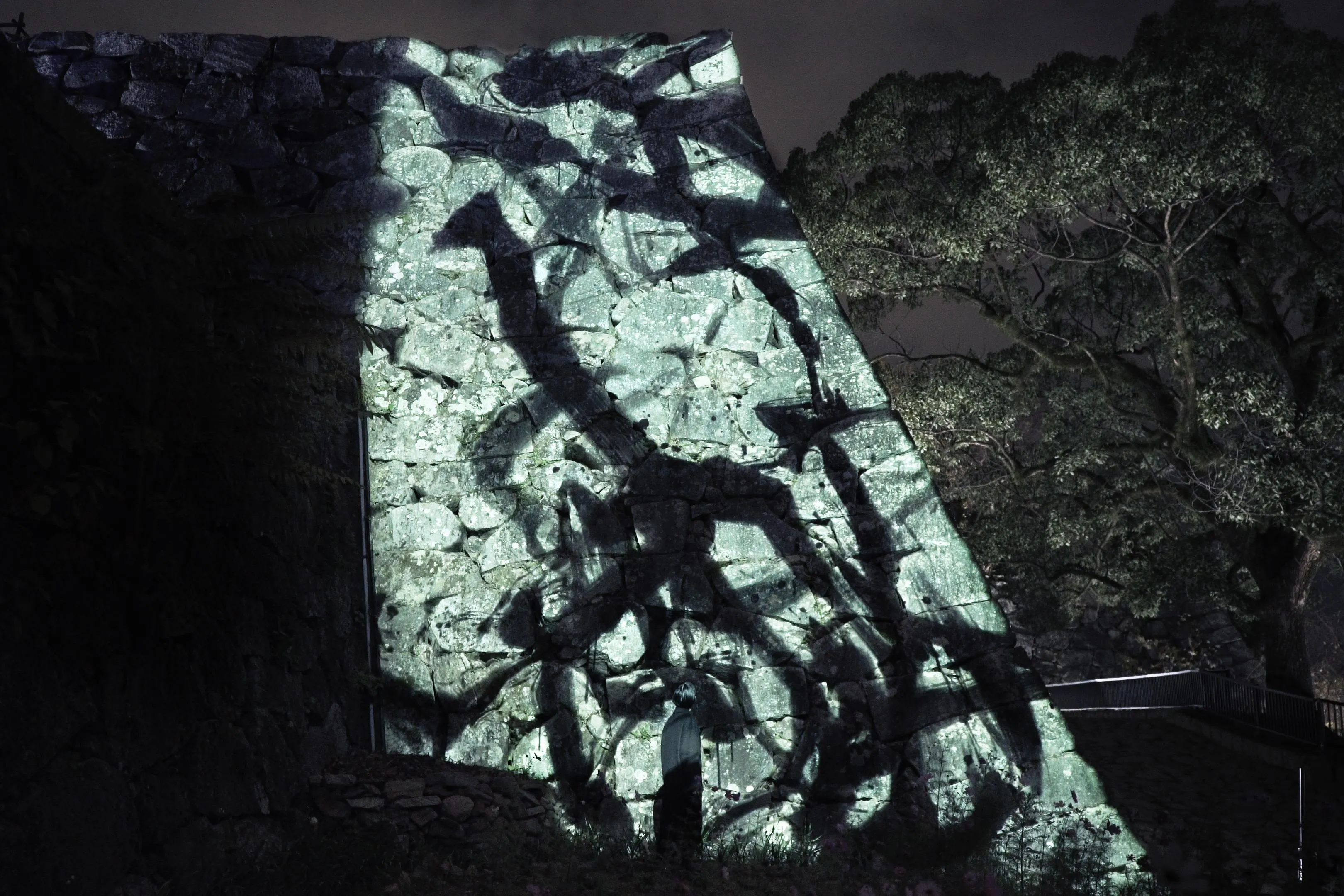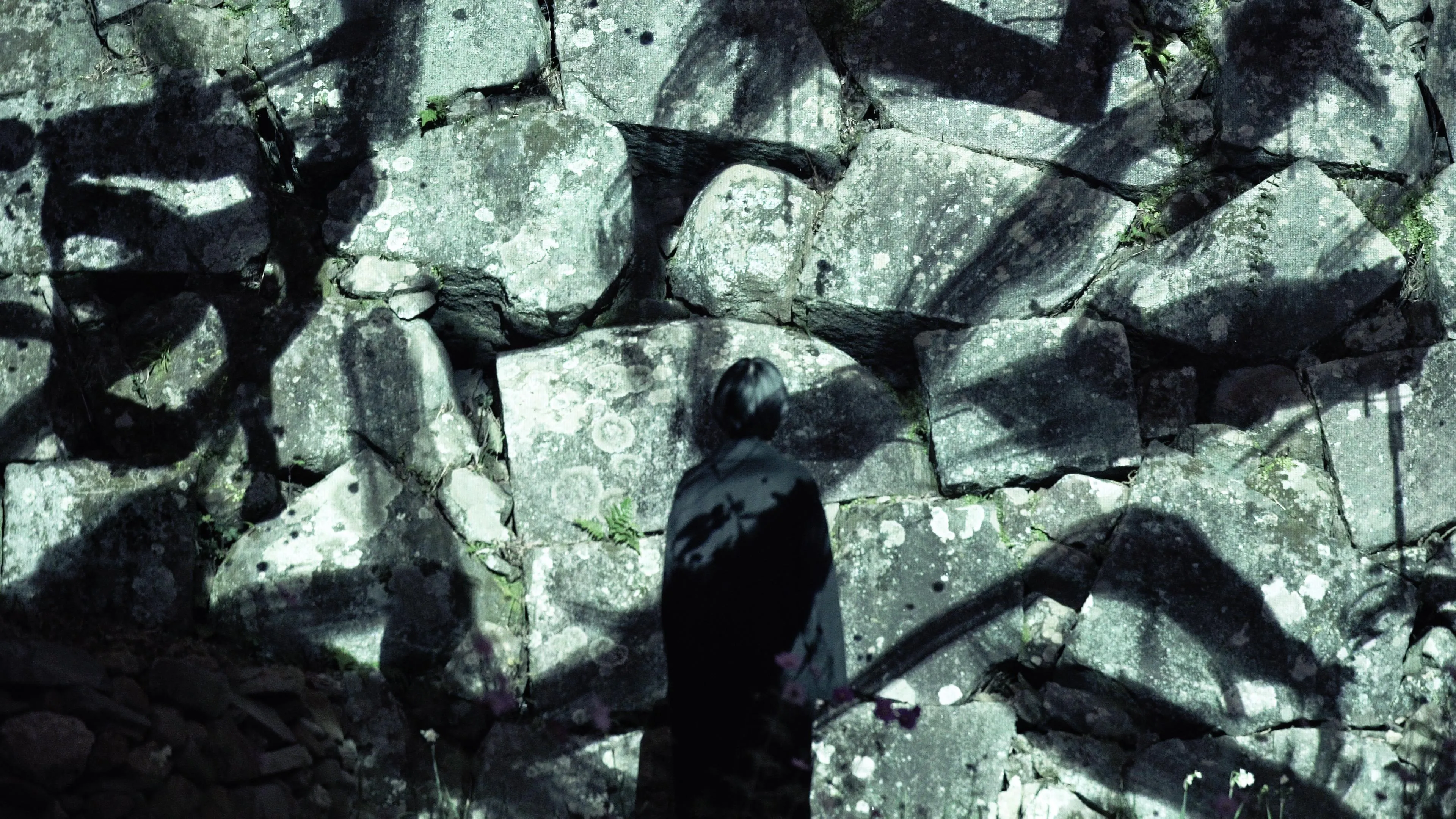Reversible Rotation in the Stone Wall - Fukuoka Castle Ruins
teamLab, 2019, Digital Installation, Sound: Hideaki Takahashi


Reversible Rotation in the Stone Wall - Fukuoka Castle Ruins
teamLab, 2019, Digital Installation, Sound: Hideaki Takahashi
Built in 1607, Fukuoka Castle is also known as the Stone Castle. This installation artwork makes use of the stone walls of the castle.
The light that draws the calligraphy is black, meaning there is no light, thus making it indistinguishable from the shadows of the stone walls that have been weathered over the past several hundred years. The writing merges with the shadows of the stone wall, and the Spatial Calligraphy is continuously written on the stone wall.
The Spatial Calligraphy rotates in the artwork space, every aspect rotating in the same direction. But because of the special characteristics of Ultrasubjective Space, it can appear to be rotating clockwise or counterclockwise.
Spatial Calligraphy is calligraphy drawn in space, a form of calligraphy that teamLab has been exploring since it was founded. The artwork reconstructs calligraphy in three dimensional space to express the depth, speed and power of the brush stroke, and that calligraphy is then flattened using the logical structure of space that teamLab calls Ultrasubjective Space. The calligraphy shifts between two and three dimensions.
The light that draws the calligraphy is black, meaning there is no light, thus making it indistinguishable from the shadows of the stone walls that have been weathered over the past several hundred years. The writing merges with the shadows of the stone wall, and the Spatial Calligraphy is continuously written on the stone wall.
The Spatial Calligraphy rotates in the artwork space, every aspect rotating in the same direction. But because of the special characteristics of Ultrasubjective Space, it can appear to be rotating clockwise or counterclockwise.
Spatial Calligraphy is calligraphy drawn in space, a form of calligraphy that teamLab has been exploring since it was founded. The artwork reconstructs calligraphy in three dimensional space to express the depth, speed and power of the brush stroke, and that calligraphy is then flattened using the logical structure of space that teamLab calls Ultrasubjective Space. The calligraphy shifts between two and three dimensions.

